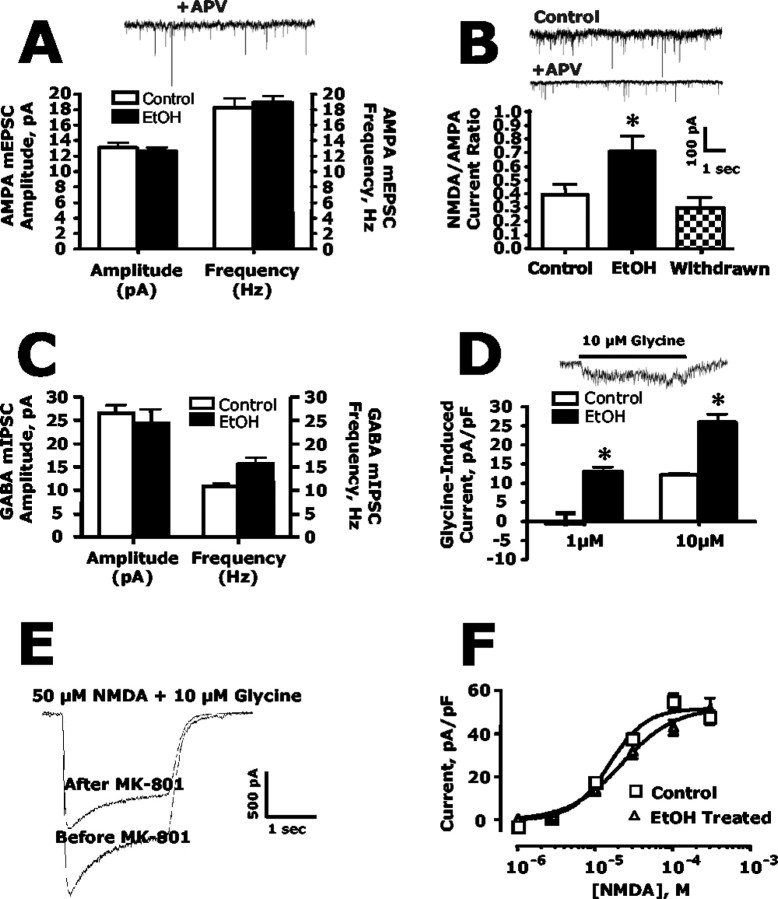Figure 7.
Chronic ethanol exposure enhances synaptic but not extrasynaptic NMDA currents and does not affect synaptic AMPA currents. A, In the presence of APV (10 μm) to block NMDA receptors, ethanol (50 mm; 4 d) had no effect on either the amplitude or frequency of mEPSCsAMPA (Student's t test; n = 7). B, Ethanol treatment (50 mm; 4 d) increased the mEPSC NMDA/AMPA amplitude ratio. When culture dishes were removed from the ethanol vapor chambers and ethanol was allowed to evaporate from the culture media, the NMDA/AMPA current ratio returned to control levels. The asterisk indicates a significant difference from control (p < 0.05, Student's t test; n = 7). C, Ethanol (50 mm; 4 d) did not alter either the amplitude or frequency of mIPSCsGABAA (Student's t test; n = 3-4). D, Activation of synaptic NMDA receptors by the addition of the NMDA receptor coagonist glycine resulted in enhanced NMDA current amplitude in ethanol-treated cultures compared with untreated controls. The asterisk indicates a significant difference from control (p < 0.05, Student's t test; n = 5-8). E, F, Extrasynaptic NMDA receptor currents were isolated from synaptic currents by selectively blocking synaptic NMDA receptors using the MK-801 trapping technique. D, Stimulation of extrasynaptic NMDA receptors by application of NMDA revealed extrasynaptic currents constituted approximately two-thirds of the total current (compare the size of the before and after MK-801 trace). E, Ethanol treatment (50 mm; 4 d) did not alter the NMDA concentration-response curve for activation of extrasynaptic NMDA receptors (n = 5).

